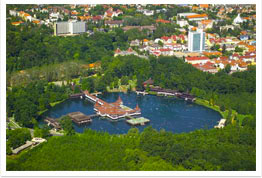 The city of Hévíz in Southwest-Hungary, in Zala County, is the centre of the small region of Hévíz. The world famous natural peat-bed medicinal lake can be found here. The history of the bathing place reaches back to pre-historical times. The healing
properties of the Lake of Hévíz may have already been known by the Romans, which is supported by the coins collected from the lake by divers in the beginning of the 1980s and the altar stone found in the vicinity of
the lake. Findings from the age of the migration of peoples also refer to the fact that the lake was used by both the German and Slavic peoples who came here. Hévíz was first mentioned in writing in a charter from 1328,
when the settlement was called locus vulgarites Hewyz dictus. The city of today was established by the merging of the settlements of Hévizszentandrás and Egregy in 1946.
The city of Hévíz in Southwest-Hungary, in Zala County, is the centre of the small region of Hévíz. The world famous natural peat-bed medicinal lake can be found here. The history of the bathing place reaches back to pre-historical times. The healing
properties of the Lake of Hévíz may have already been known by the Romans, which is supported by the coins collected from the lake by divers in the beginning of the 1980s and the altar stone found in the vicinity of
the lake. Findings from the age of the migration of peoples also refer to the fact that the lake was used by both the German and Slavic peoples who came here. Hévíz was first mentioned in writing in a charter from 1328,
when the settlement was called locus vulgarites Hewyz dictus. The city of today was established by the merging of the settlements of Hévizszentandrás and Egregy in 1946.
The city has based its development on tourism. The KSH data show that the number of guest nights spent in Hévíz is only second after that of Budapest. Its popularity is mainly due to the lake situated in its territory, also known for its healing properties. The healing place of more than 200 years of bathing traditions is visited by hundreds of thousands of tourists every year. The Lake of Hévíz is the biggest natural warm-water lake of Europe, which is excellently suitable for healing treatments due to its bicarbonate, alkali salt and sulphur content. The water surface is 47.000 m2, its greatest depth is 36,6 metres. The water temperature is 33-35 C and it does not go lower than 26 C even in winter, so it is suitable for bathing all year round.
Egregy
It stands as an example of the Hungarian village Romanian small churches placed in the landscape. The church calls one’s attention with its proportions which are strikingly beautiful already at the first sight, with its noble simplicity and harmonious blending into the Pannon landscape.
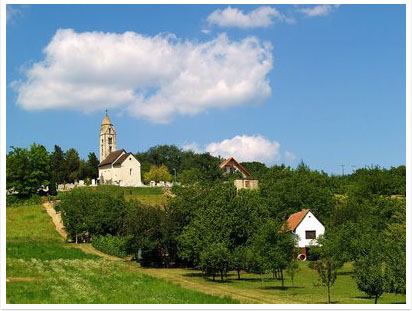
A great number of tourists have visited the vicinity of the church already from the 1950s. At that time the cellar-masters offered their own wines, which the visitors drank standing and talking among the vine-stocks. The cellar-masters however have kept pace with the growing tourism: at the end of the 1970s the first pubs, restaurants opened at the foot of the vine gardens, where the wine tasted naturally much better. The fresh air and the wonderful view allured more and more visitors to the hill.
Protected forest, park
In the city, especially walking on the promenade around the lake, many types of exotic trees can be seen, from which the line of sycamore trees planted along the promenade and those old trees planted simultaneously with the sycamore trees, the ash, the marsh cypresses and the Chinese ancient pine are of outstanding significance. The colourful sight of the water lilies covering the surface of the lake fascinates everyone. The Indian red water lily was naturalized by Sándor Lovassy, the teacher of the Economic Academy of Keszthely in 1998.
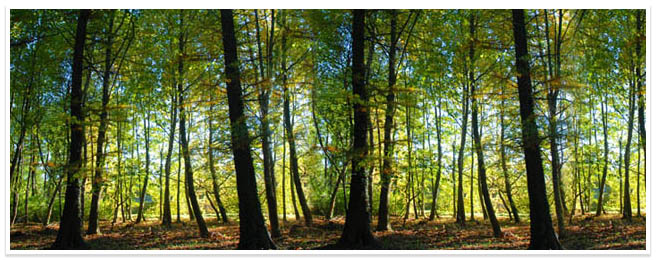
Hévíz őshonos tavirózsája a fehér tündérrózsa, ami a nemesítések következtében ma már csak inkább a lefolyócsatornában fordul elő. A szigorúan védett növények virágzása már nyár elején elkezdődik, és egészen november végéig tart. The white water lily is the autochthonal water lily of Hévíz, which nowadays can only be found in water-spouts due to plant improvement. The blossoming of the strictly protected plants starts already in early summer and goes on until late November. The water lilies have a dual significance: their leaves lessen the evaporation of the lake, while the trails in the lake’s bottom protect the radium-rich medicinal peat. During a walk in the forest numerous bird species can be seen, and if one is lucky, one can even feed squirrels.
Keszthely
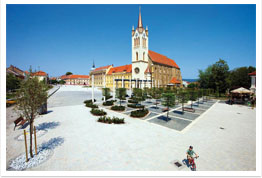
A city of ancient history and culture, it is the centre of the Keszthely small region.
It is situated at the Western end of Lake Balaton, on the shore of the Keszthely Bay, north from the estuary of the Zala River, in a territory that is flat in the south and slightly hilly in the north. The hills, mountains of the Zala Hills and the Keszthely Mountains embrace the city from all directions. Due to the closeness of the Adriatic Sea and Lake Balaton its climate is more balanced, summer is less hot and winter is less cold.
Keszthely was first mentioned in a written source in 1247, in the charter of the chapter of Veszprém. This document mentions the Parish-Church of St. Martin in the place of the fountain in front of the castle and the St. Lawrence Chapel. A village core was not only formed in the area of the castle and the Main Square, but also in the territory of today’s St. Nicholas Cemetery, where Keszthely’s third church was built already in the course of the XIII century.
The Festetics Castle is a monument of outstanding importance in Keszthely. Its construction was started already in the middle of the 18th century, but it acquired its final form only in the 1880s. The city hosts several
cultural events every year, part of which is organized in the banquet hall of the Festetics Castle. It has its own congress centre and theatre. The most significant figure of Keszthely and the Festetics family, György
Festetics (1755-1819) lived here from 1791. Between 1799 and 1801 he had a library wing built to the castle, and he supported the publication of many magazines, literary works. From 1817 onwards he organized the Helicon
festival twice a year, in the course of which he received the most famous poets and writers of the Dunántúl as guests. This caused Dániel Berzsenyi to say that Keszthely was a “small Hungarian Weimar”. The approximately
80 thousand volume collection of the Helicon Library was established by the Festetics family.
The Castle Park
The 42-hectare park is a nature reserve. Several special tree types can be found here. The Chinese gingkos were planted in the times of György Festetics. The oldest tree is a 400-year-old
marsh oak tree (Quercus robur). The castle park is the home of one of Keszthely’s biggest summer attractions, the Keszthely Summer Festival. Performances for adults and children, concerts, great acts await the audiences
in summer evenings. The artist group of the Central Theatre has prepared real treats for summer for the greatest pleasure of the spectators.
Hunting Museum and Historical Model Railway Exhibition
 The monumental Hunting Museum makes not only the hearts of hunter visitors beat faster, but offers
a memorable experience to every visitor. The trophies reflect speciality separately and by complementing each other as well, standing as a worthy memory of collectors and offering experience and knowledge for hunters
and visitors alike.
The monumental Hunting Museum makes not only the hearts of hunter visitors beat faster, but offers
a memorable experience to every visitor. The trophies reflect speciality separately and by complementing each other as well, standing as a worthy memory of collectors and offering experience and knowledge for hunters
and visitors alike.
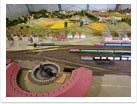
The Semmering and Zala plotting boards preserve the memory of the late joint Hungarian-Austrian Southern Railway. This is the only mountain railway plotting board which demonstrates the difference in height and presents every art object with total authenticity.
http://www.keszthely.hu/muzeumok/vadaszati-muzeum-es-tortenelmi-modellvasut-kiallitas
Spiral Parliament
http://www.csigaparlament.hu/
Torture Museum
http://www.kinzomuzeum.hu/
Doll Museum
http://www.babamuzeum-keszthely.hu/index.html
Historical Waxworks
http://www.tortenelmipanoptikum.hu/index.html
Toy Museum
http://www.jatekmuzeum.eu/index.html
Nostalgia and Kitsch Museum
http://www.nosztalgiamuzeum.hu/index.html
Balaton
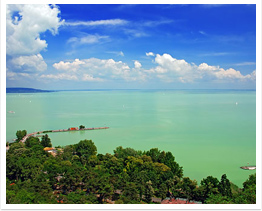 Lake Balaton is situated in the middle of Dunántúl, confined by the Balaton Highlands in the north, the Zala and Somogy Hills in the
west and the south, and Mezőföld in the east. Balaton is our natural treasure famous all across Europe; it is the biggest lake of Hungary. Its greatest depth is 11 m, and average depth is 3-4 m. The water is shallower
on the southern shore; therefore it warms up quickly in summer. The forest covered mountains of Bakony rise on its northern shore. A lot of vine and fruit are grown on the sunlit slopes of the Balaton Highlands. The
pleasant weather in summer, the sailing boats shepherded by the north-western winds and the landscape of harmonic beauty has a calming effect on people coming to rest here. The lowest amount of precipitation falls in
August and September, with an average of six rainy days each month. The enormous body of water also has a balancing effect on the temperature of the air, which is milder around the lake in summer, warmer in autumn and
winter, and cooler in spring than in the areas further away from the lake. In most winters Balaton freezes in; the ice layer’s thickness often reaches 20–30 cm. The characteristic ice-quakes, long rifts in the ice-sheet
when milder weather sets in, are formed accompanied by strong sound phenomena due to the shrinking of the ice surface.
Lake Balaton is situated in the middle of Dunántúl, confined by the Balaton Highlands in the north, the Zala and Somogy Hills in the
west and the south, and Mezőföld in the east. Balaton is our natural treasure famous all across Europe; it is the biggest lake of Hungary. Its greatest depth is 11 m, and average depth is 3-4 m. The water is shallower
on the southern shore; therefore it warms up quickly in summer. The forest covered mountains of Bakony rise on its northern shore. A lot of vine and fruit are grown on the sunlit slopes of the Balaton Highlands. The
pleasant weather in summer, the sailing boats shepherded by the north-western winds and the landscape of harmonic beauty has a calming effect on people coming to rest here. The lowest amount of precipitation falls in
August and September, with an average of six rainy days each month. The enormous body of water also has a balancing effect on the temperature of the air, which is milder around the lake in summer, warmer in autumn and
winter, and cooler in spring than in the areas further away from the lake. In most winters Balaton freezes in; the ice layer’s thickness often reaches 20–30 cm. The characteristic ice-quakes, long rifts in the ice-sheet
when milder weather sets in, are formed accompanied by strong sound phenomena due to the shrinking of the ice surface.
Badacsony is known by many as the most important and most frequented holiday resort of Balaton. To others the name stands for a 438 metre high volcanic mountain, which offers wonderful tourist lines in every season of the year. Badacsony and its surroundings is a popular, lively, busy tourist centre on the north-western shore of Lake Balaton. Badacsony is one of the most beautiful holiday resorts and excursion areas of the Balaton Highlands and the home of world-famous fiery wines. Its unparalleled, unforgettable beauty makes it excellently suitable for excursions and tours. The top of the Badacsony Mountain can be reached simply on tourist routes, the 379 steps of the "Stairs of the Outlaws". From the mountain-top of 438 metre height a splendid panorama opens to the Badacsony landscape, Lake Balaton, the southern shore, the surrounding mountains, and the Szigliget Bay. The real sight of Badacsony is the Badacsony Mountain itself, which is circular based, with a perimeter of 11 km, and with its 438 m height raises as an enormous bell in the immediate vicinity of Lake Balaton.
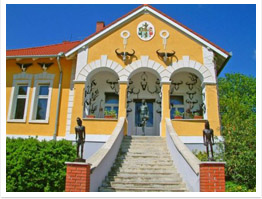 Veszprém és Zala megye határán, a 71-es út mellett, festői környezetben található Balatonederics legismertebb nevezetessége
az Afrika Múzeum. The Africa Museum, one of the most well-known sights of Balatonederics can be found on the border of the counties of Veszprém and Zala, beside Road 71 in a picturesque environment. Its foundation is
the merit of the famous Africa-explorer and hunter, the late Dr. h.c. Dr. Endre Nagy, for whom the castle served as a hunting home for a long time. The museum houses the objects of almost 4 decades of collection work,
an enormous amount of European and African trophies. The aborigines’ articles of personal use, hunting and war instruments, furniture, and folk art objects of the African peoples can be found here. In Endre Nagy’s study
his personal objects, favourite weapons and his hunting gear can be seen.
Veszprém és Zala megye határán, a 71-es út mellett, festői környezetben található Balatonederics legismertebb nevezetessége
az Afrika Múzeum. The Africa Museum, one of the most well-known sights of Balatonederics can be found on the border of the counties of Veszprém and Zala, beside Road 71 in a picturesque environment. Its foundation is
the merit of the famous Africa-explorer and hunter, the late Dr. h.c. Dr. Endre Nagy, for whom the castle served as a hunting home for a long time. The museum houses the objects of almost 4 decades of collection work,
an enormous amount of European and African trophies. The aborigines’ articles of personal use, hunting and war instruments, furniture, and folk art objects of the African peoples can be found here. In Endre Nagy’s study
his personal objects, favourite weapons and his hunting gear can be seen.
Kis-Balaton
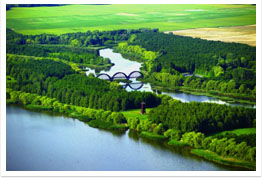 Kis-Balaton has been a strictly guarded natural reserve since the 1920s, and forms part of the Balaton Highlands National Park together with the Keszthely Mountain.
Kis-Balaton has been a strictly guarded natural reserve since the 1920s, and forms part of the Balaton Highlands National Park together with the Keszthely Mountain.
The Kányavári Island is a part of the acutely protected Kis-Balaton, which can be freely visited without a guide. It can be accessed from the road between Sármellék and Balatonmagyaród. Visitors can reach the island
through a spectacular wooden bridge. The 13-stage information system introduces the bird species of Kis-Balaton. The frequently seen great crested grebe (Podiceps cristatus) served as the basis of the educational path’s
symbol. The Great Crested Grebe Educational Path was formed in the Kányavári Island of the Kis-Balaton region, which is a highly frequented are of the Balaton Highlands National Park (accessible from the road between
Zalavár and Balatonmagyaród). The 15 stages of the almost two kilometre, 1-1.5 hour long walking path, which can be visited throughout the year, expressly seeks to represent the bird species of the Kis-Balaton region.
Each board describes one particular group of birds (coastal birds, singing birds, birds of prey, etc.). The walking path does not forget about the region’s bat fauna and the conservation activity connected to Kis-Balaton
either. The Kányavári Island is enclosed by the Zala River and the western water reservoir of Kis-Balaton. It can only be accessed on foot, through the wooden bridge of Zala, which was totally renovated by the Takács
Bt. between 2006 and 2008. On the island walking ways, resting places, bacon frying places, playgrounds were established, and people possessing a fishing ticket can also go fishing on the shore. From the look-out towers
the landscape covered with water, marshland, rich in fauna and flora can be well observed. Kis-Balaton’s fame is principally due to the bird species nesting here, even if the innumerable plant and animal species living
here would themselves make the protection of the area reasonable. Beside the hatching species, the passing bird species and those spending the winter here are also of great significance, consisting of mainly ducks and
geese. The Great Crested Grebe Educational Path expressly seeks to show the bird species. The length of the path is approximately 1,5 km. The Kányavári Island is open for everyone to spend their free time in a cultured
way; with the help of its two look-out towers it is possible to admire the wonderful beauty of the landscape and get to know the fauna and flora of Kis-Balaton. For those who have a passion for fishing there are fishing
possibilities along the Újszabar-Zalavár by-pass and in the immediate vicinity of the Kányavári Island. The educational paths belonging to the territory of the Balaton Highlands National Park are free to visit all year
round, including the Great Crested Grebe Educational Path on Kanyarávi Island, in the Kis-Balaton region.
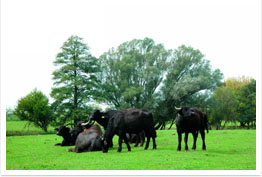 In the Buffalo Preserve of Kápolnapuszta about 250 buffalos live. The area plays an important part in the survival of the autochthonal buffalos and the preservation of their genetic stock, and it is the national centre for the presentation of this species.
After World War II the few buffalos remaining in Hungary lived in Balatonnagyberek and were kept in a free way. The Kápolnapuszta State Farm was commissioned to collect the splinter stock, and placed the herd of about
40-60 buffalos in Zimánypuszta, at Kis-Balaton, a territory unsuitable for agricultural farming but ideal for the keeping of buffalos. It has been in its present place since 1976, which has formed part of the Balaton
Highlands National Park since 1997. Opening hours: Monday-Sunday: from 9:00 a.m. until dark (all year round).
In the Buffalo Preserve of Kápolnapuszta about 250 buffalos live. The area plays an important part in the survival of the autochthonal buffalos and the preservation of their genetic stock, and it is the national centre for the presentation of this species.
After World War II the few buffalos remaining in Hungary lived in Balatonnagyberek and were kept in a free way. The Kápolnapuszta State Farm was commissioned to collect the splinter stock, and placed the herd of about
40-60 buffalos in Zimánypuszta, at Kis-Balaton, a territory unsuitable for agricultural farming but ideal for the keeping of buffalos. It has been in its present place since 1976, which has formed part of the Balaton
Highlands National Park since 1997. Opening hours: Monday-Sunday: from 9:00 a.m. until dark (all year round).
Riding a bike in the natural reserve of Kis-Balaton is a special
experience. A brand-new bicycle path goes along the lake to the look-out tower and the bird lurking-place. You can hike on several easy running shingly roads, observing the thousands of protected birds and plants from
your bike. The bicycle road is totally flat, free of cars, and offers an excellent recreational possibility for families, children and elderly people alike. 10 bicycle resting places established by the Takács Bt. were
inaugurated in 2012, which offer a great possibility for bikers to rest during their tours around Kis-Balaton and Hévíz. The more experienced, practiced bikers, who are in for a greater challenge, should not miss the
200-300 metre vine hills of the neighbouring Zalaszabar and Szentgyörgyvár. Going uphill one can find a number of wine cellars, where the local people’s hospitality and the tranquil atmosphere make the bikers stop for
a while. The hilly landscape, the breathtaking panorama of Kis-Balaton offers an unforgettable experience to any tourist visiting the area.
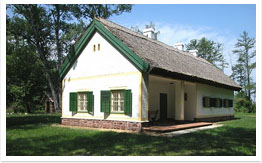 The Diás Island hidden in the territory of the strictly protected Kis-Balaton region can only be visited with a guide. The István Fekete Memorial Place (which can be accessed from the direction of Fenékpuszta, through the dam system) was established on
the island by the Balaton National Park Directorate. The Matula hut showing the everyday life of the Kis-Balaton fishermen of that time can also be seen beside the demonstration place. Its point of interest lies in
its being built on the basis of the descriptions of “Thorn Castle” and a photo taken in 1950, exactly in the way it was painted by István Fekete in his famous juvenile novel. The beauties, milieu of the landscape was
made known by István Fekete in his novel, the Thorn Castle.
The Diás Island hidden in the territory of the strictly protected Kis-Balaton region can only be visited with a guide. The István Fekete Memorial Place (which can be accessed from the direction of Fenékpuszta, through the dam system) was established on
the island by the Balaton National Park Directorate. The Matula hut showing the everyday life of the Kis-Balaton fishermen of that time can also be seen beside the demonstration place. Its point of interest lies in
its being built on the basis of the descriptions of “Thorn Castle” and a photo taken in 1950, exactly in the way it was painted by István Fekete in his famous juvenile novel. The beauties, milieu of the landscape was
made known by István Fekete in his novel, the Thorn Castle.
Köveskút
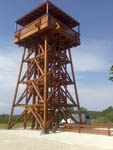 The 10 bicycle resting places established by the Takács Bt. were inaugurated in 2012, and offer a great possibility for bikers to rest during their tours around Kis-Balaton and Hévíz. The wonderful wooden look-out tower was completed in Köveskút, 8 km
from Hévíz in 2011, from where the surrounding hills, valleys, and in good weather even part of the Balaton can be seen. The look-out tower was named Mother Theresa and it is also the work of the Takács Bt. In Köveskút
there is also a place where it is possible to caress and get to know interesting animals face-off.
The 10 bicycle resting places established by the Takács Bt. were inaugurated in 2012, and offer a great possibility for bikers to rest during their tours around Kis-Balaton and Hévíz. The wonderful wooden look-out tower was completed in Köveskút, 8 km
from Hévíz in 2011, from where the surrounding hills, valleys, and in good weather even part of the Balaton can be seen. The look-out tower was named Mother Theresa and it is also the work of the Takács Bt. In Köveskút
there is also a place where it is possible to caress and get to know interesting animals face-off.




